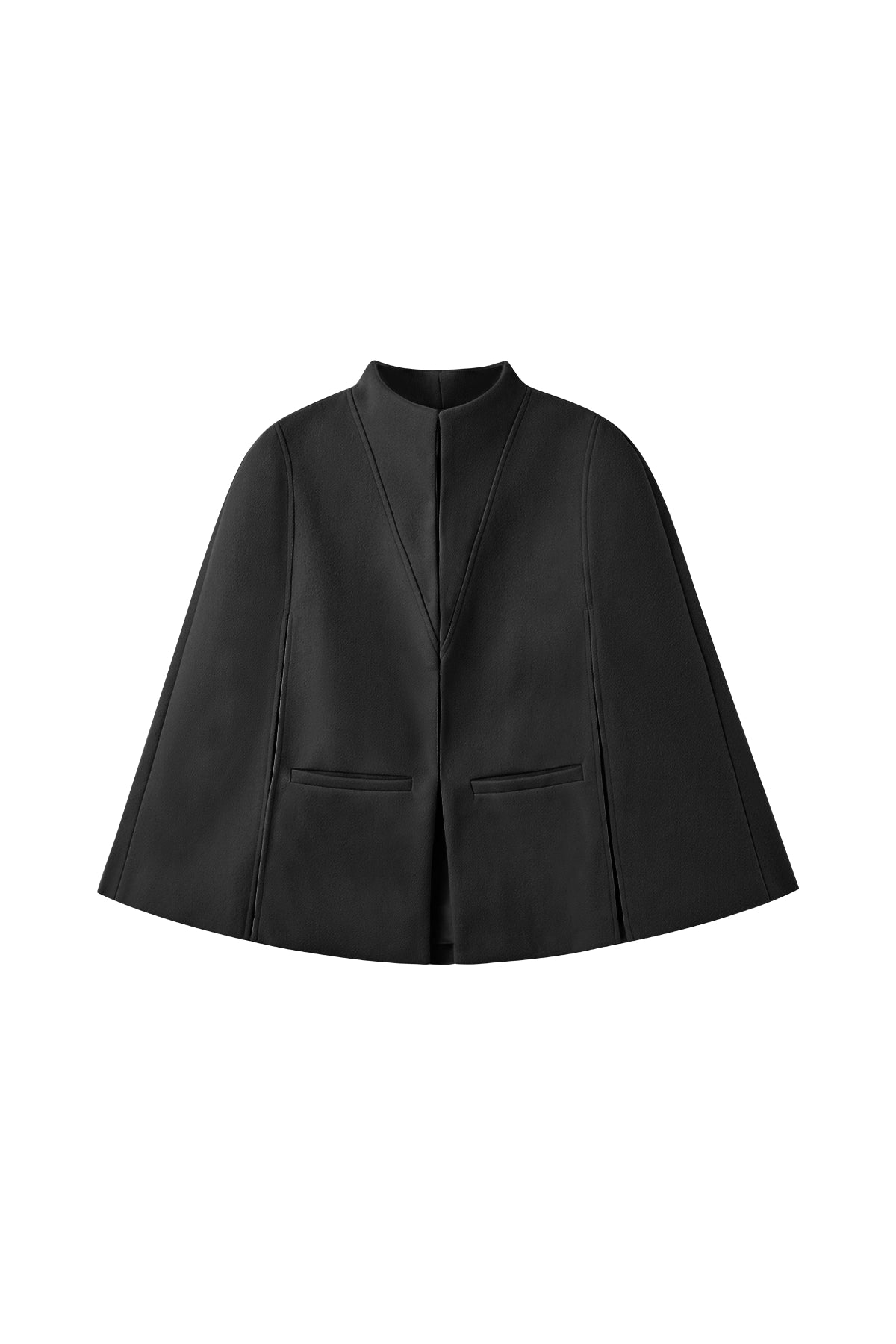A well-fitted blazer can make you look more professional, more confident, and instantly elevate even the simplest outfits. As a beginner, how do you choose the right blazer? Will it look too formal? What color should you choose? Do pants always have to match the blazer? This guide will answer these common questions and help you get started with ease.
Choosing the Right Fit: Find the Blazer That Suits You
Fit, Shoulder Line, Fabric
Fit: When you put it on, it should naturally close without being too loose or too tight. When standing straight with your arms down, the cuff should reach the wrist bone, and showing 1–2 cm of shirt cuff looks more professional. When buttoned, there should be no X-shaped wrinkles radiating from the button area. The collar should lie close to the neck without gaping or flipping outward.
Shoulder Line: The shoulder seam should sit exactly at the shoulder point (the outermost bone of your shoulder). It should not fall in or extend more than 5 mm. The sleeve head should transition smoothly with the shoulder, without obvious sleeve puckering or shoulder bumps.
Fabric: Wool and wool blends drape well, resist wrinkles, and look formal—best for all-season or fall/winter office wear. Cotton and knit fabrics are more breathable and casual, though prone to wrinkles, and are friendly for summer. Ponte knit or Roma knit is comfortable and stretchy, great for travel or long sitting, though slightly less formal.
Pro tip: When shopping for a blazer, wear a shirt or thin sweater underneath to make sure layering still feels comfortable. In the fitting room, use a mirror plus a quick phone photo: check if the V-zone depth, waistline, and hemline look balanced.
Must-Have Blazer Colors for Women
Common answers include:
Classic essentials: Black, navy → perfect for work and versatile for all occasions.
Neutral staples: Off-white, gray, camel → enhance elegance and easy to pair.
Statement colors: Red, pink, green → add a touch of fashion and personality.
For your first blazer, choose a dark tone (black or navy) to ensure it works in formal settings. For your second blazer, consider adding a bright or fashion-forward color to enrich your wardrobe.
What Length Blazer for Short Women
If you are petite, you may worry that a blazer could overwhelm your frame. The answer to what length blazer for short woman is:
Short or just covering the hips → the best choice to elongate your legs and make you look taller.
Ideally, the hem should fall around the hip bone or just slightly below, which helps emphasize the waistline.
Avoid long oversize styles:
Blazers that extend beyond mid-thigh tend to “cut off” body proportions and make you appear shorter.
Oversize blazers, while trendy, can overwhelm a petite frame and make you look sloppy.
Styling tip: high-waisted bottoms
High-waisted pants or skirts can further optimize body proportions.
Example: a cropped blazer + high-waisted jeans + heels = instantly longer-looking legs.
For petite women, the rule is simple: “short and sharp.” Shorter blazers elongate your figure, and when paired with high-waist bottoms and the right shoes, you can visually “add a few inches” while keeping the look sharp and stylish.
How to Dress Up a Women’s Blazer: For Every Occasion
Many people search for “how to dress up a women’s blazer” or “how to dress down a women’s blazer.”
Formal occasions (dress up): For interviews, business meetings, or whenever you need to look professional, pair your blazer with a crisp shirt, slim-fit trousers or a pencil skirt, and a pair of heels. This combination highlights a sharp and professional image.
Casual occasions (dress down): For weekends, dates, or everyday outings, pair your blazer with jeans and a T-shirt, then add sneakers. This instantly transforms your look from business to relaxed chic.
Do Blazers and Pants Have to Match for Women?
The answer is: not necessarily.
Same color or fabric: Looks like a suit set, more formal, great for the office, presentations, or important business occasions.
Different colors: Creates more layers and a stylish contrast. Example: navy blazer with white pants looks sharp and refreshing.
Beginner tip: Start with a dark blazer + light pants. It’s hard to go wrong and keeps your look clean and polished.The Cicy Bell Dark Brown Button Knit Blazer keeps the sharp silhouette of a blazer while using soft knit fabric for added comfort and ease. When paired with jeans, it feels less formal than a traditional structured blazer and instead creates a relaxed, effortlessly stylish look.
Is a Blazer Too Formal for Women?
No, a blazer is not too formal. It is more flexible than a suit jacket. You can wear it with a shirt for formal occasions, or with a T-shirt or jeans for a casual style. In other words, the formality of a blazer depends on how you style it: shirt + pencil skirt = professional; T-shirt + jeans = casual. That’s why a blazer is considered a “versatile jacket” that can switch between occasions with ease.
What to Wear Under a Women’s Blazer
What to Wear Under a Women’s Blazer depends on the occasion. A shirt is better for work and formal settings, while a T-shirt is perfect for weekends and casual wear.
Shirt: In the workplace, a shirt is the blazer’s best partner. A crisp white or light blue shirt under a blazer looks sharp and professional. To elongate your neckline, opt for a V-neck shirt with a blazer.
T-shirt: For casual settings, a T-shirt is the relaxed choice. A white tee with a blazer and jeans is a go-to combination—simple yet stylish. For a street-style vibe, pair an oversize blazer with a loose T-shirt and sneakers, instantly achieving that Instagram-worthy look.
How a Blazer Can Change Your Wardrobe
A good blazer can dramatically increase your wardrobe’s versatility and style. Beginners should start with a dark blazer (black or navy), which is classic and safe. For fit, ensure the shoulder line sits correctly, the body is tailored but not tight, and the length suits your height. Styling is also flexible—shirts make the look more formal, T-shirts make it more casual, and pants don’t always have to match exactly.
Whether for commuting, social events, or weekends, a blazer can instantly upgrade even the most basic outfit. Remember this simple rule: choose the right fit, pick the right color, and style it flexibly. This way, you can look professional and confident in any setting.




